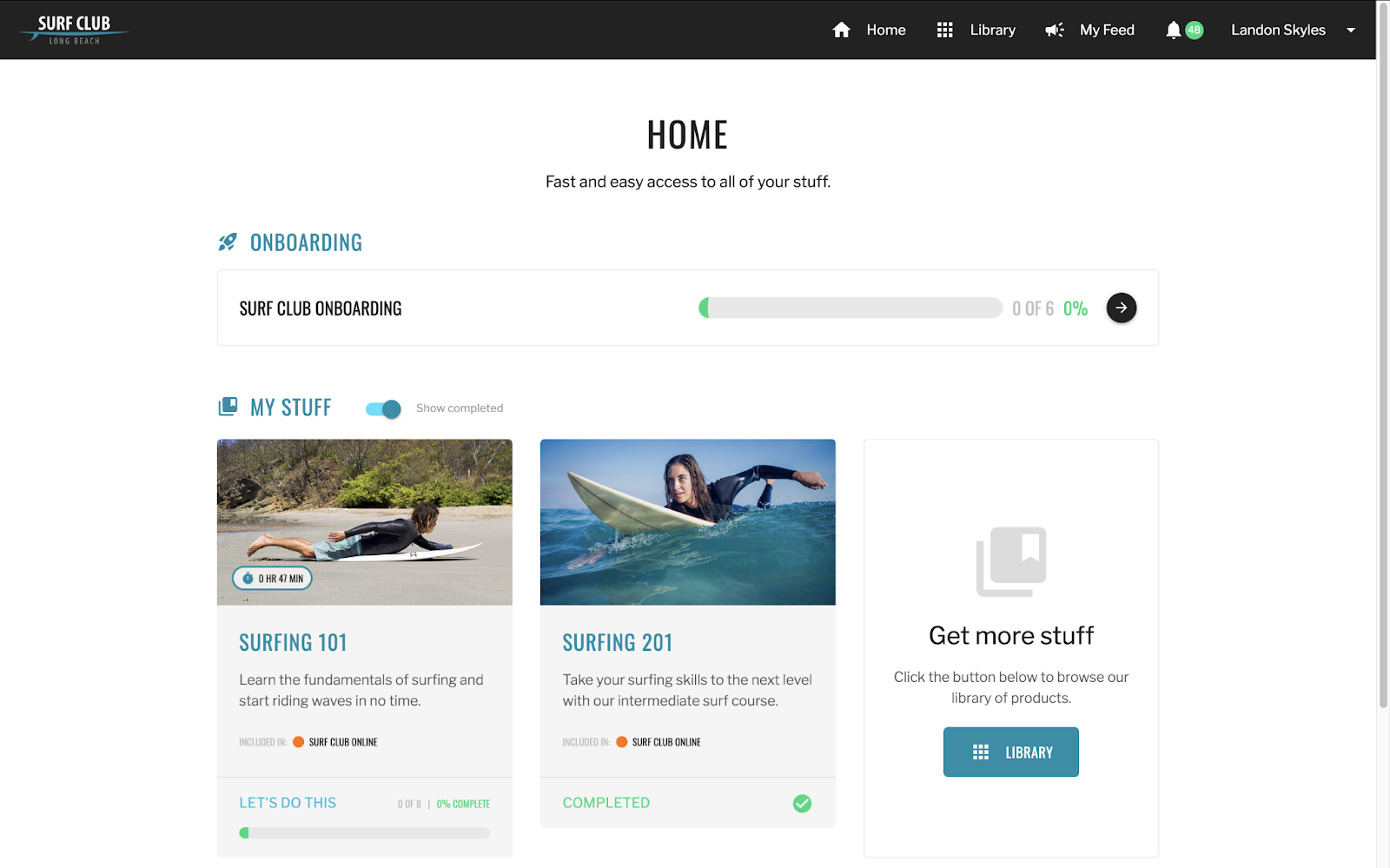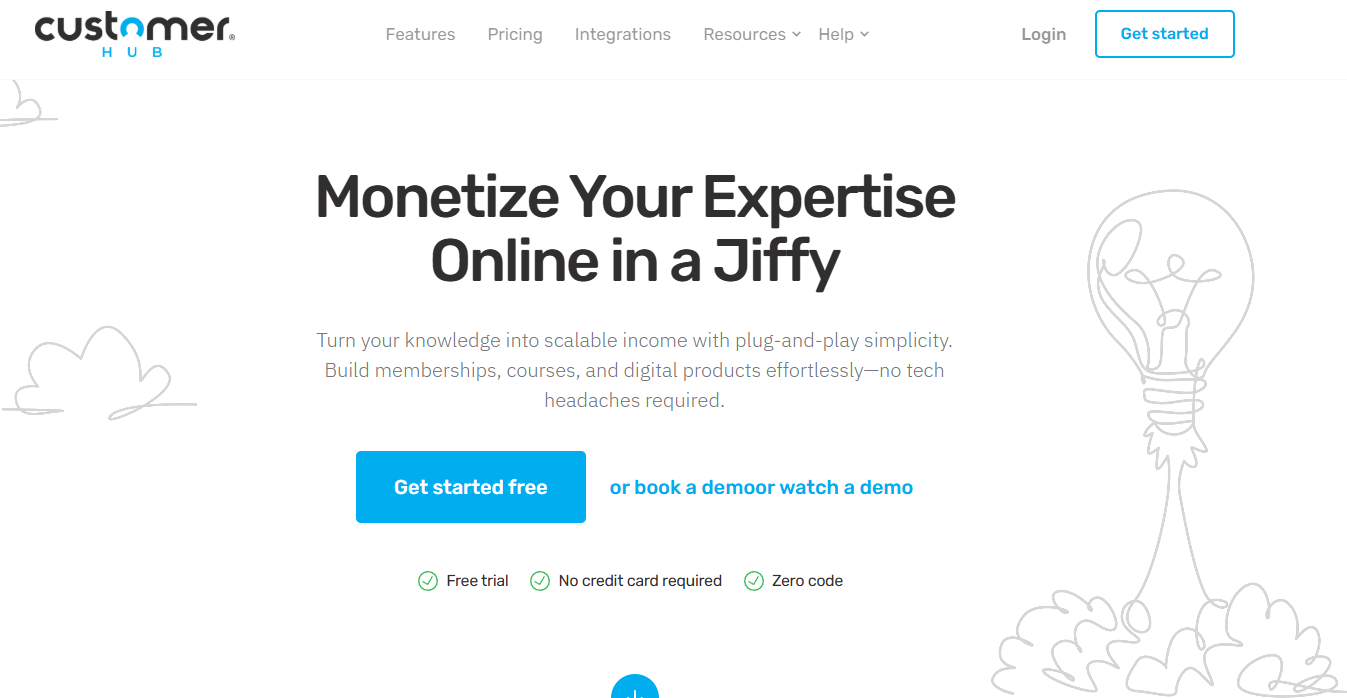Building an online course takes planning and effort. But keeping learners engaged is where most creators struggle. It’s common to see learners drop off midway, skip important lessons, or decide to pause their course.
In many cases, the content itself isn’t the problem. What’s missing is the experience that guides people through it in a way that feels smooth and worth their time.
The good news is that these problems can be fixed with the proper structure and tools. Engaging courses are built around connection, which leads to better results and higher completion rates.
In this article, we’ll show you how to make online courses engaging and discover the best online course creation tools that can support this kind of engagement within your community.
What to Avoid When Creating Your Online Course
Many online courses lose engagement because they focus more on how the content is presented than on how it feels to the learner.
One common issue is packing too much into one lesson. Long videos or dense modules often feel like a lecture in a physical classroom. Learners also drop off due to endless slide decks or talking-head videos, which can quickly make a course feel repetitive.
Also, it's a common mistake in creating online courses to build the program without a feedback loop. When learners have no way to engage with others or ask questions, the experience can feel cold and disconnected.
A course should feel like a conversation, rather than a one-way broadcast. Asking questions, prompting responses, and including activities keep students engaged and thinking.
The best online community platforms allow you to run your course and host your learner community in one place. When people have space to share and connect, they’re more likely to stay motivated and finish the course.
9 Strategies to Make Online Courses More Engaging
Creating course content means keeping learners interested and involved. Here are proven ways to make online courses engaging so your target audience gets real value from every lesson.
1. Set Clear Learning Goals
Learners stay engaged when they understand what they’re working toward.
Each course should begin with a simple explanation of what learners will gain. Every lesson should build toward a specific skill or outcome tied to the overall learning outcomes.
For example, instead of saying “Welcome to Module 1,” show the purpose: “By the end of this module, you’ll be able to create a three-part email sequence for your product launch.”
An online training module creator makes it easy to guide your learners with built-in tools like progress tracking, prerequisites, and structured onboarding flows. You can define clear learning objectives, outline milestones, and help members see where they’re headed.
2. Keep Lessons Short and Focused
When too much information is packed into one video or module, people lose interest or feel overwhelmed. Breaking your online course structure into short, focused lessons helps learners absorb the material one step at a time.
You have to aim for five to ten minutes per lesson, with each one covering a single topic or task. This makes the course easier to follow and gives learners a sense of progress as they move forward.
Shorter lessons also allow more flexibility, so online learners can complete the course in small blocks of time without falling behind.
3. Organize Your Content
Keeping your course content clear and well-structured is just as important as what you teach.
You need to keep your course dynamic and attention-grabbing by mixing up how you present your course materials.
CustomerHub Products are the primary way to create and organize all your content. On your site, a product is a group of pages and sections arranged in a linear sequence.
This sequence can take one of two forms: Standard Products or Collections. Both formats give you flexibility to deliver your content in the correct order and structure for your course.

You can also use Pages for standalone lessons or key resources, Sections to group related content, and Posts for time-sensitive updates or informal teaching moments.
Engaging students online with this flexible setup presents your content in a way that matches your course style and your audience’s needs. If you're offering video lessons, checklists, downloads, or worksheets, organizing your materials makes it easier for learners to navigate.
4. Ask Questions Along the Way
Courses that ask nothing from the learner often lead to passive learning. When you include simple questions throughout the course, it encourages people to think about what they have just learned.
These questions don’t have to be formal. They can be as simple as, “What would you do in this situation?” or “Can you think of an example from your own work?”
You can also use multiple-choice polls, short-answer boxes, or quick reflection prompts. Asking questions creates a natural pause and helps learners connect the lesson to real-life situations.
This small change turns each section into an active learning process instead of just something to watch and move on from.
5. Add Quizzes and Knowledge Checks
Quizzes help learners check what they’ve understood before moving on. These quick reviews strengthen the key concepts from a lesson and give people a way to measure their progress.
Even simple questions at the end of a module can improve memory and confidence.
A few multiple-choice or true-or-false questions after each lesson are enough to keep learners thinking. When people see that they’re improving as they go, they’re more likely to stay focused and finish the course.
Don’t forget to identify areas where learners may be struggling regularly. This insight helps you adjust future content and provide more detail.
6. Share Real-Life Examples
People relate more to stories, case studies, or actual results than to theory alone. When you show how a concept works in practice, it becomes easier to remember, just like how lessons tend to stick better when delivered in person.
You can explain how a client used your method, walk through a real problem and solution, or share before-and-after results. These examples help students apply the same steps in their work or business.
7. Invite Discussion and Interaction
A great course goes beyond content. It also creates a connection. When learners can share experiences and share ideas, they’re more likely to stay motivated and complete the program.
CustomerHub makes this easy by bringing your course and community together in one seamless online education environment.
With built-in features like comment threads, user profiles, and a private customer feed, you can spark meaningful conversations and encourage students to support one another.

The User Comments feature lets members give feedback, ask questions, and join conversations on your content pages. You can approve, reply to, or delete comments to keep discussions respectful and on track.
If you’re a coach, consultant, or course creator, CustomerHub simplifies the tech so you can focus on building real relationships and delivering impact in your online classes.
8. Use Visual Progress Tracking
People stay motivated when they can see their progress. That’s why visual cues like progress bars, checkmarks, and completion badges keep learners engaged and moving forward.
CustomerHub makes it easy to create a smooth, motivating learning journey. With built-in progress tracking, learners can instantly see what they’ve completed and what’s next.

Each completed course or module is marked to make them feel accomplished and to make it effortless to pick up where they left off.
9. Ask for Feedback and Keep Updating
Your course will always benefit from learner peer reviews and timely feedback. You can send a quick survey or message at the halfway point or after the course ends.
With CustomerHub, you can easily gather feedback using module-based prompts, comment sections, or embedded survey links.
If it’s a quick question at the end of a lesson or an open message box for suggestions, you’ll get valuable insights that help you continuously improve your content in real time.
Better yet, when learners see their input leading to meaningful updates, they feel heard and appreciated. That sense of involvement builds trust, increases learner engagement, and keeps them coming back for more.
How CustomerHub Keeps Your Course Organized and Engaging

CustomerHub combines your course, community, and digital products in one simple platform, without the setup stress of traditional systems. Here’s what makes CustomerHub the best choice for delivering engaging learning experiences:
- Quick onboarding with built-in steps: Guide new members with custom dashboards, progress tracking, and prerequisite controls
- Drag-and-drop course and membership setup: Easily manage your videos, files, and lesson structure without coding or tech skills needed
- Private member feed: Share updates, answer questions, and post content in a clean, focused space that keeps learners involved
- Unlimited users, products, and memberships: Add new courses, digital products, or group programs without worrying about hitting a cap
- Flexible monetization tools: Sell courses, memberships, or coaching programs using multiple payment models
- Built-in tracking and analytics: View course completion rates, track learner engagement, and filter activity by user or product
- Easy integrations: Connect with Stripe, Zapier, your email system, and 7,000+ apps to keep data flowing into your CRM
- Reliable support: Get unlimited live chat, a helpful resource center, and optional Done-for-You setup services
CustomerHub believes growing your business shouldn’t mean dealing with hidden charges or confusing upgrade plans. That’s why it offers a simple, all-in-one pricing structure that includes everything from content hosting to community features.
You get access to all the tools needed to build, scale, and automate your course and community for $79 per month, with the option to try it free for 14 days. With CustomerHub, you can build a real connection without juggling multiple tools or paying for add-ons you don’t need.
Make Online Learning Interactive and Simple—Try CustomerHub!
Creating a course that captures attention and keeps learners coming back doesn’t have to be complicated. With CustomerHub, you get the tools to build, manage, and grow an online course that’s full of value and built around real learner connection.
It brings together your course content, community, and progress tracking in one place so you can focus on helping people learn rather than figuring out tech.
Unlike platforms that make you juggle multiple systems or upgrade to unlock basic features, CustomerHub keeps everything smooth with plug-and-play simplicity.
If you're offering one course or many, you’ll have full control over your layout, branding, and monetization without running into limits as your audience grows.

Start your free 14-day trial today and see how effortless it can be to turn your knowledge into real learner impact!
FAQs About How to Make Online Courses Engaging
How to create an engaging online course?
Start with clear goals, a solid lesson plan, and a simple course structure. Make sure your online course content is broken down into small chunks, supported by storytelling and examples.
You can use tools that promote student engagement, like interactive activities, quizzes, and real-life scenarios. It helps to set expectations early and guide learners at their own pace so they don’t feel overwhelmed.
Also, create a supportive online classroom where learners can ask questions, get additional support, and build relationships. Platforms that allow discussion forums and group work are key for helping students stay active and involved.
How to make an online course interactive?
You can add interactive quizzes, quick tasks, and reflection moments that make learners think. Activities like group projects or working in small groups also promote collaboration and social learning.
Try using tools that allow real-time engagement, like virtual office hours or in-platform discussion boards. CustomerHub lets learners share progress, chat with others, and access downloadable resources, which keeps them actively involved.
How to make virtual learning engaging?
You can mix up your online formats with video, audio, text, and checklists to appeal to different learning styles. Incorporate features like virtual field trips, live coaching, or Q&A sessions to create a dynamic learning environment.
Be sure to include elements that motivate students, like progress bars and recognition for small wins. Offering corporate training or skill-based pathways also works well for adult learners.
Also, allow time for connection with peers, just like in a face-to-face classroom. This kind of interaction is what turns static online teaching into something learners want to come back to.
How to increase engagement in online learning?
You need to keep your lessons short, meaningful, and linked to real-life situations. Use critical thinking prompts and frequent check-ins to reinforce the material and help learners build their learning habits.
You may also encourage interaction through group chats, office hours, or shared spaces where learners can reflect and seek feedback. These create community and make learners feel seen in your virtual classroom.






